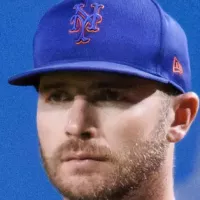Theodore John Kaczynski, known as the Unabomber, was a mathematician who became infamous for his decade-long bombing campaign targeting individuals involved with modern technology. Motivated by a deep-seated opposition to industrial society and its destructive impact on the environment and human freedom, Kaczynski retreated to a primitive lifestyle and sent bombs through the mail, resulting in several deaths and injuries. His manifesto, 'Industrial Society and Its Future,' detailed his anti-technology philosophy and criticized the erosion of individual autonomy in modern life. Kaczynski's actions and writings sparked debate about the role of technology and its consequences.
Mentioned in this timeline
CBS Broadcasting Inc CBS is a prominent American commercial broadcast...
California is a U S state on the Pacific Coast...

The Zodiac Killer an unidentified serial killer active in Northern...

Washington D C is the capital city and federal district...

Timothy James McVeigh was a domestic terrorist from the United...

San Francisco is a major commercial financial and cultural hub...
Trending

2 months ago Trump Aides Advocate for Maduro's Ousting Amidst Venezuelan Political Turmoil and Criticism.

1 month ago Brooke Rollins' SNAP Benefits Criticism Sparks Controversy; Johnson Intervenes After 'Failed You' Comment.

Jermaine Demetrius Burton is an American professional football wide receiver and return specialist currently playing for the Cincinnati Bengals of...

4 days ago Red Sox eye Pete Alonso: A potential franchise-altering acquisition for Boston.

Brett Rypien is an American professional football quarterback for the Minnesota Vikings He played college football at Boise State before...

7 months ago Gavin Newsom faces challenges in final term amid budget concerns and 2028 ambitions.
Popular
Matt and Ross Duffer known as the Duffer Brothers are...
Aftyn Alyssa Behn is an American politician currently serving as...

Candace Owens is an American conservative political commentator and author...

XXXTentacion born Jahseh Dwayne Ricardo Onfroy was a controversial yet...

Ilhan Omar is an American politician currently serving as the...

Harriet Tubman was a pivotal American abolitionist and social activist...
